Abstract
1. The characteristics of the acetylcholine (ACh) release mechanism have been studied in the auditory cortex of rabbits on stimulation of the ipsilateral medial geniculate nucleus.
2. On stimulation of the medial geniculate nucleus the mean release of ACh from the auditory receiving cortex was 6·1 times the spontaneous release; the mean release from other parts of the cortex was 2·2 times the spontaneous release.
3. The frequency of stimulation most effective in evoking ACh release was found to be 10/sec.
4. Both the spontaneous and evoked release of ACh were reduced by 40-65% in the absence of calcium from the solution bathing the auditory cortex, and increased by 15-25% when the calcium concentration in the bathing solution was doubled.
5. The presence of low concentrations of magnesium in the fluid bathing the cortex was essential for the optimal release of ACh, but high magnesium concentrations lowered this release.
6. The presence of triethylcholine (TEC) in the fluid bathing the auditory cortex reduced both the spontaneous and evoked release of ACh. This reduction was reversed in the presence of choline.
7. The effects of calcium, magnesium and TEC on the ACh release mechanism in the cerebral cortex and at the neuromuscular junction are compared.
Full text
PDF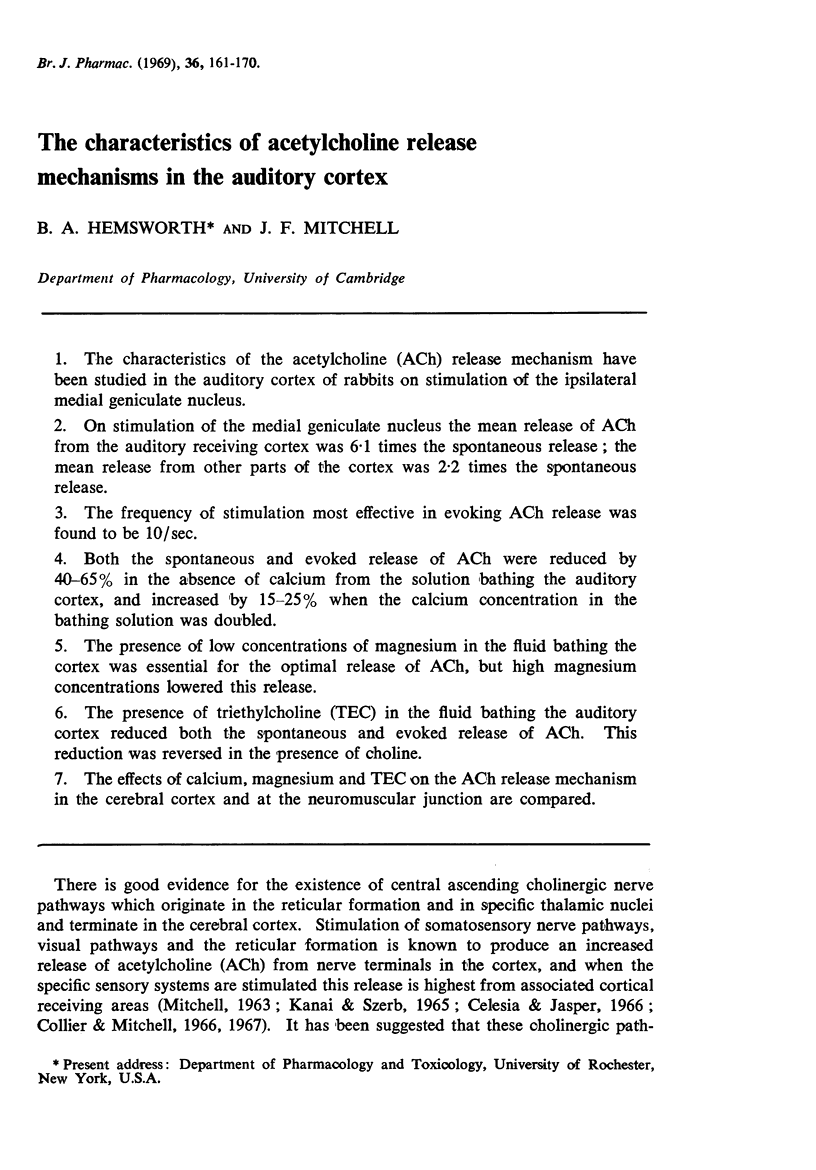
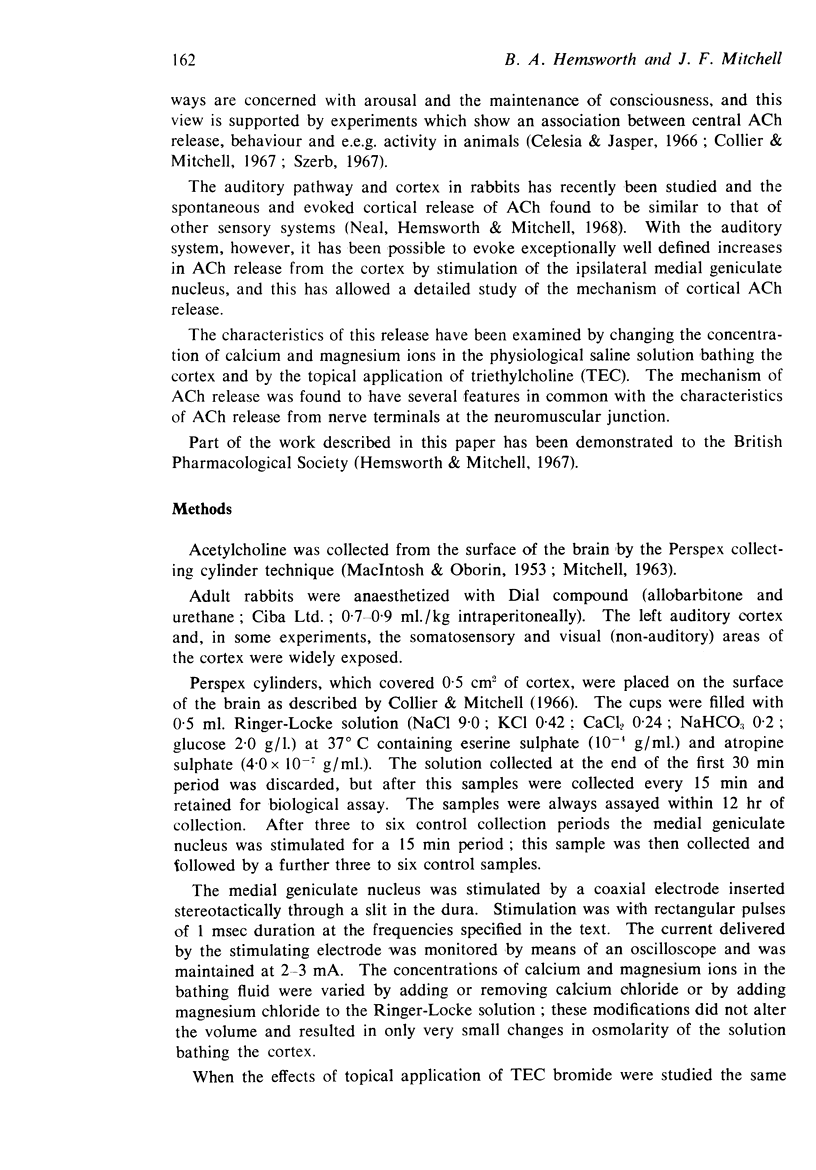
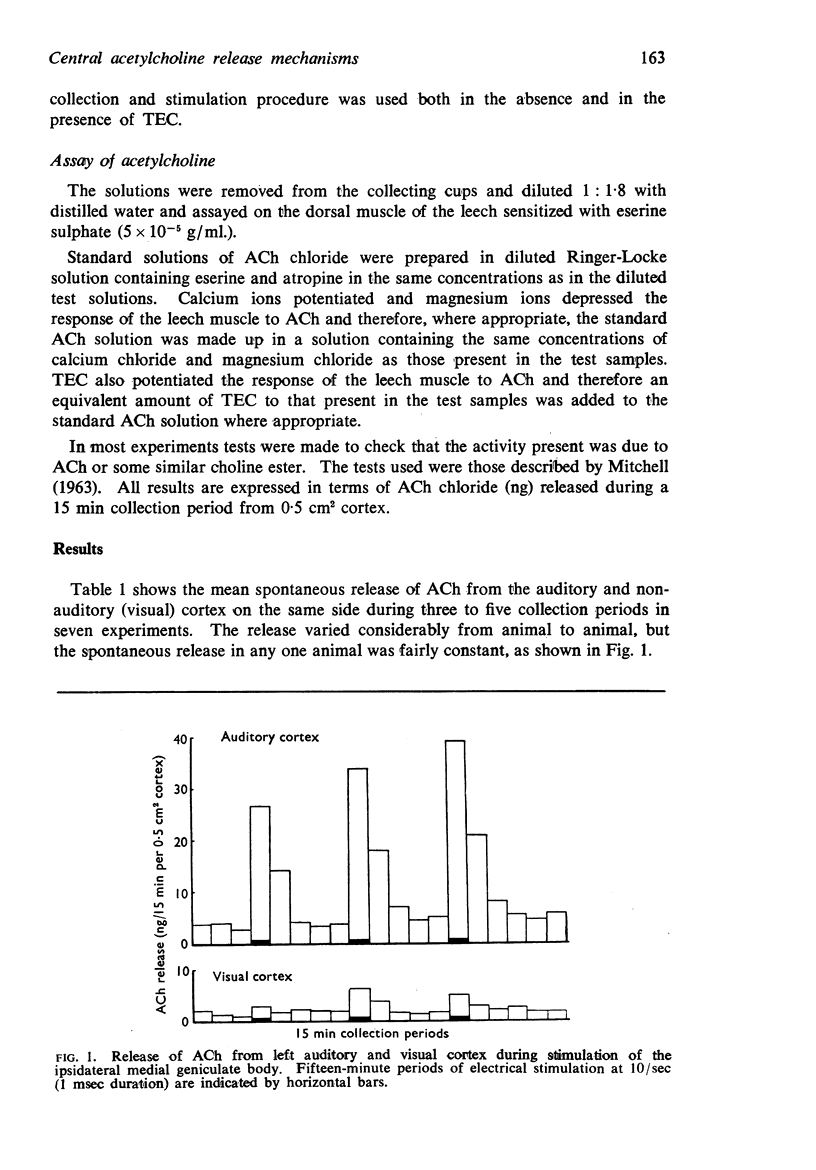
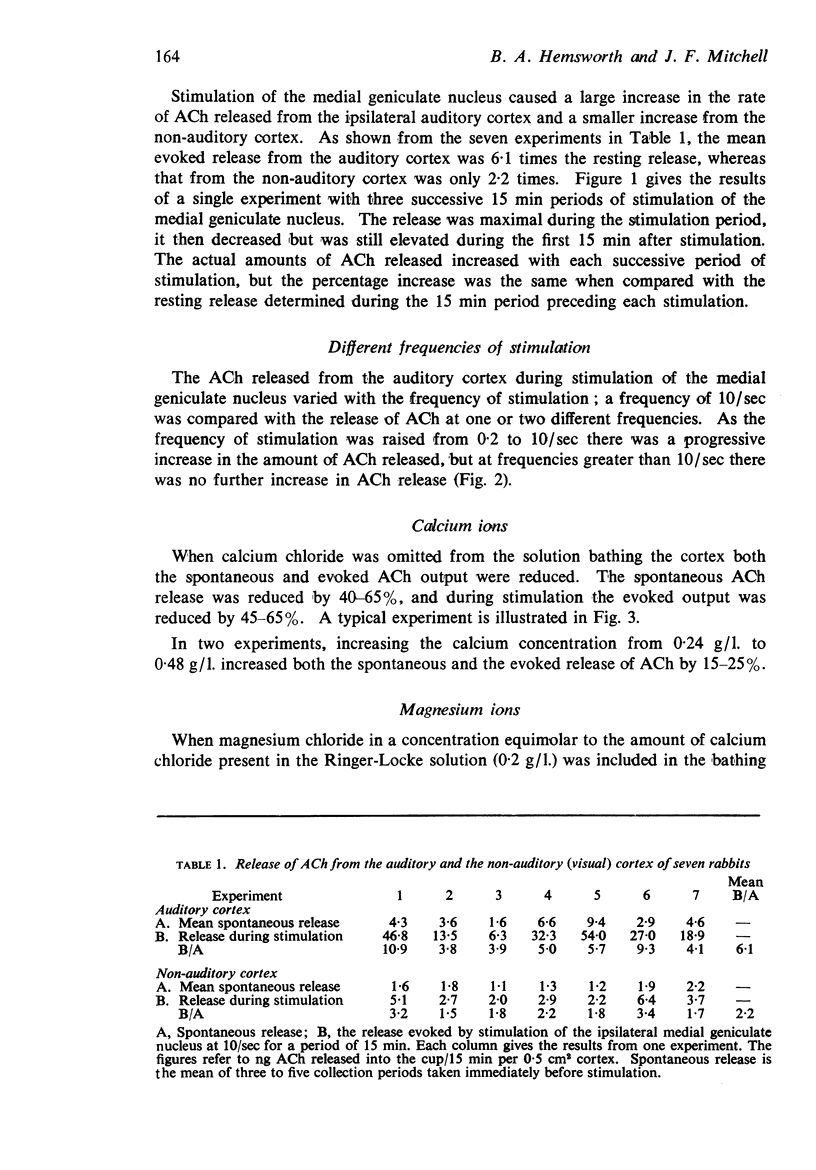
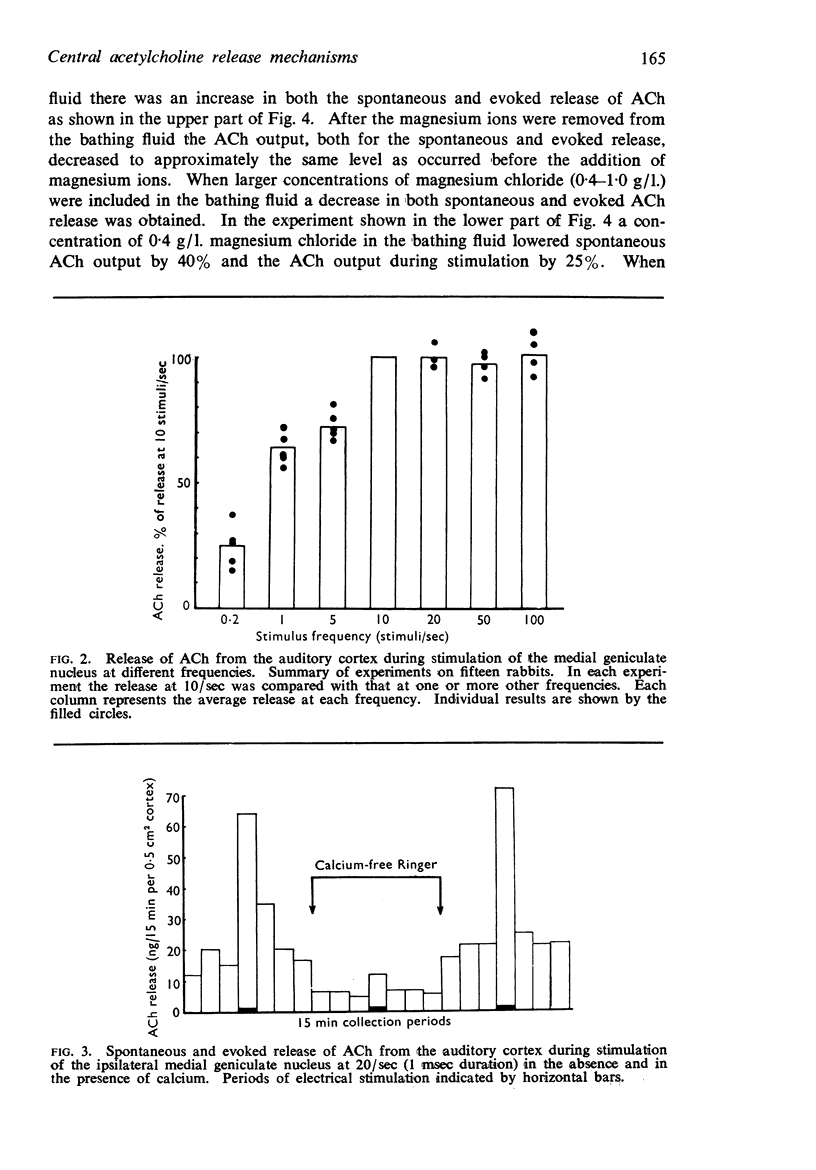
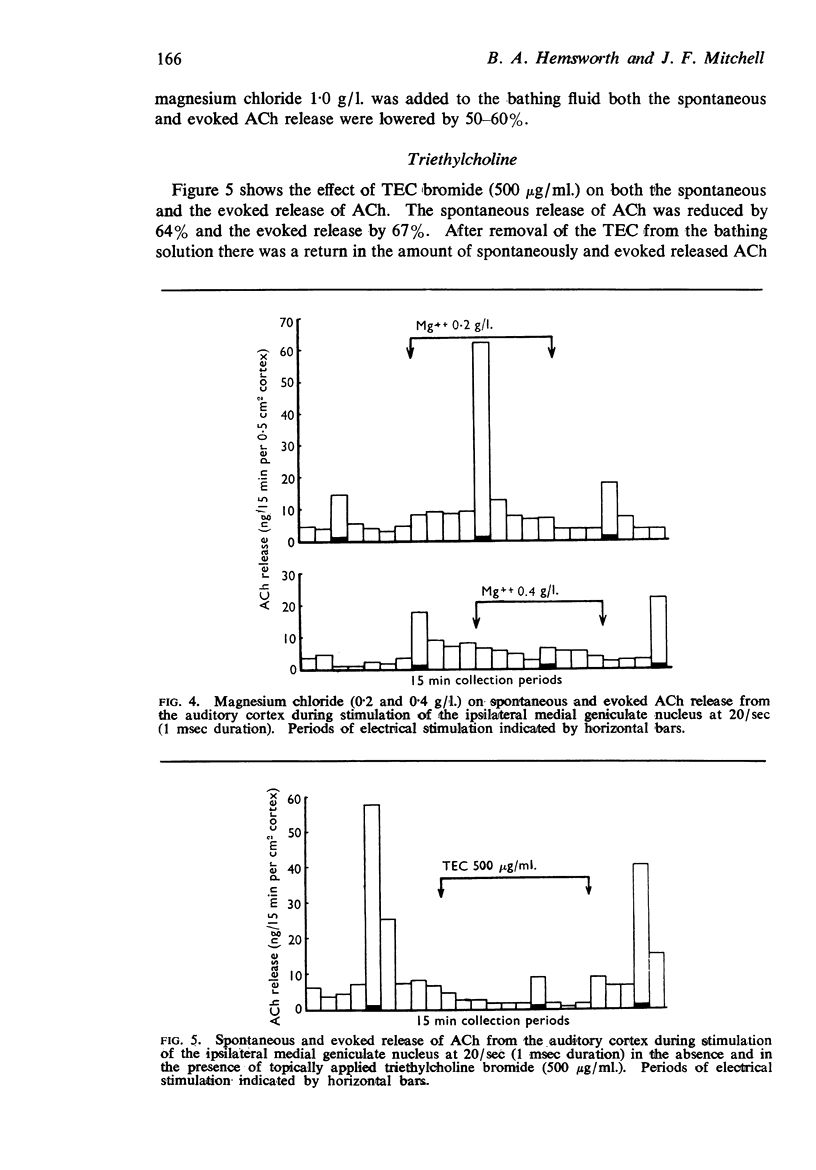
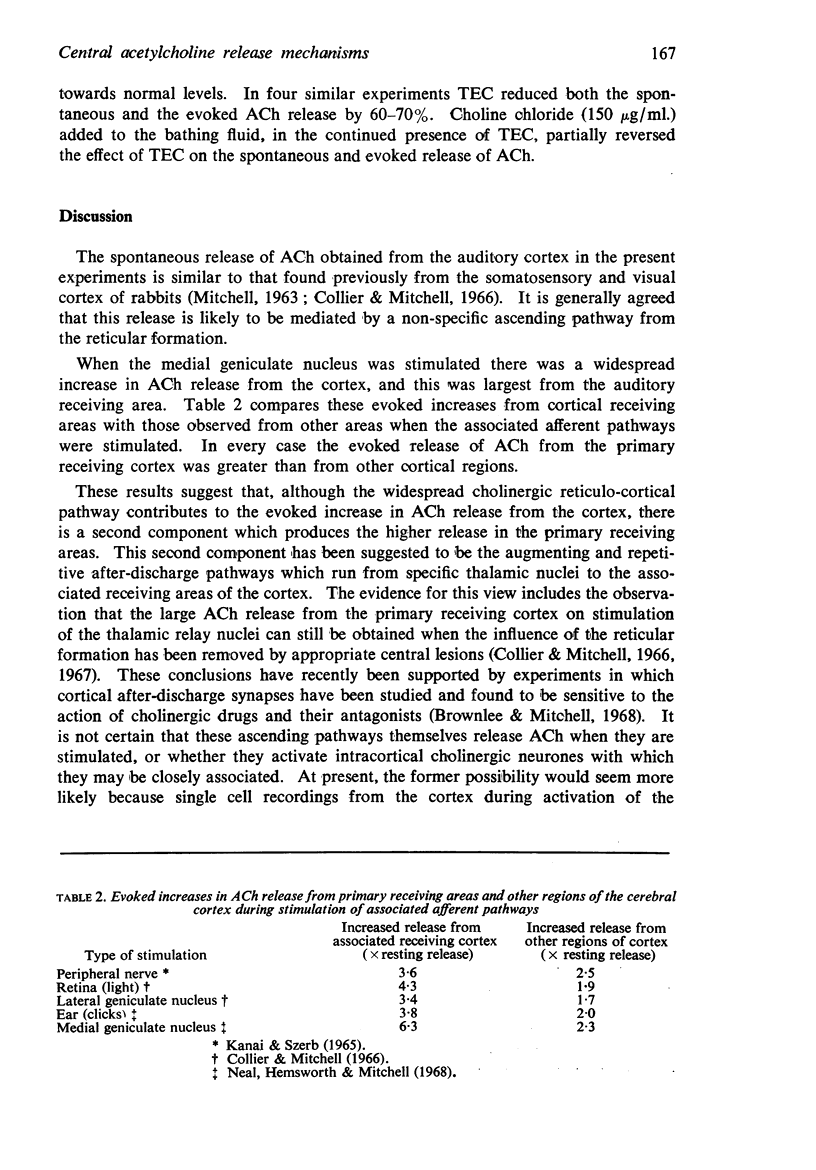
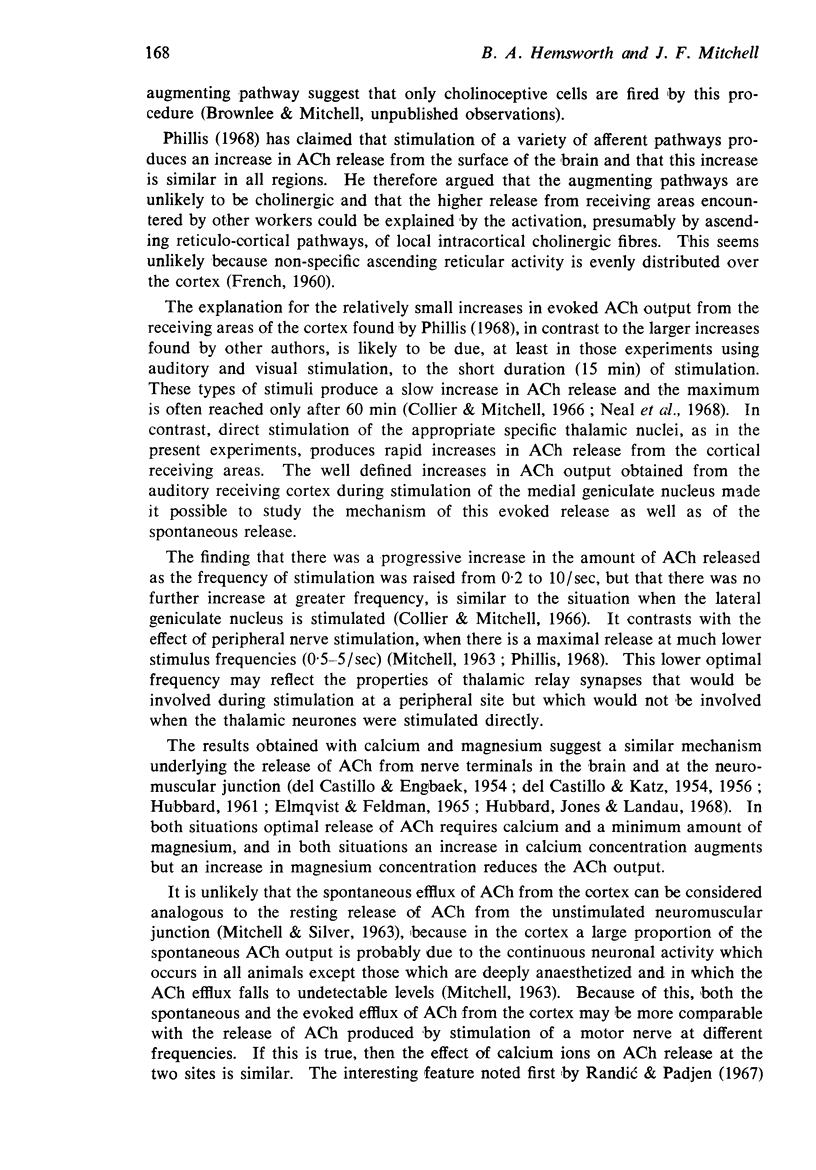
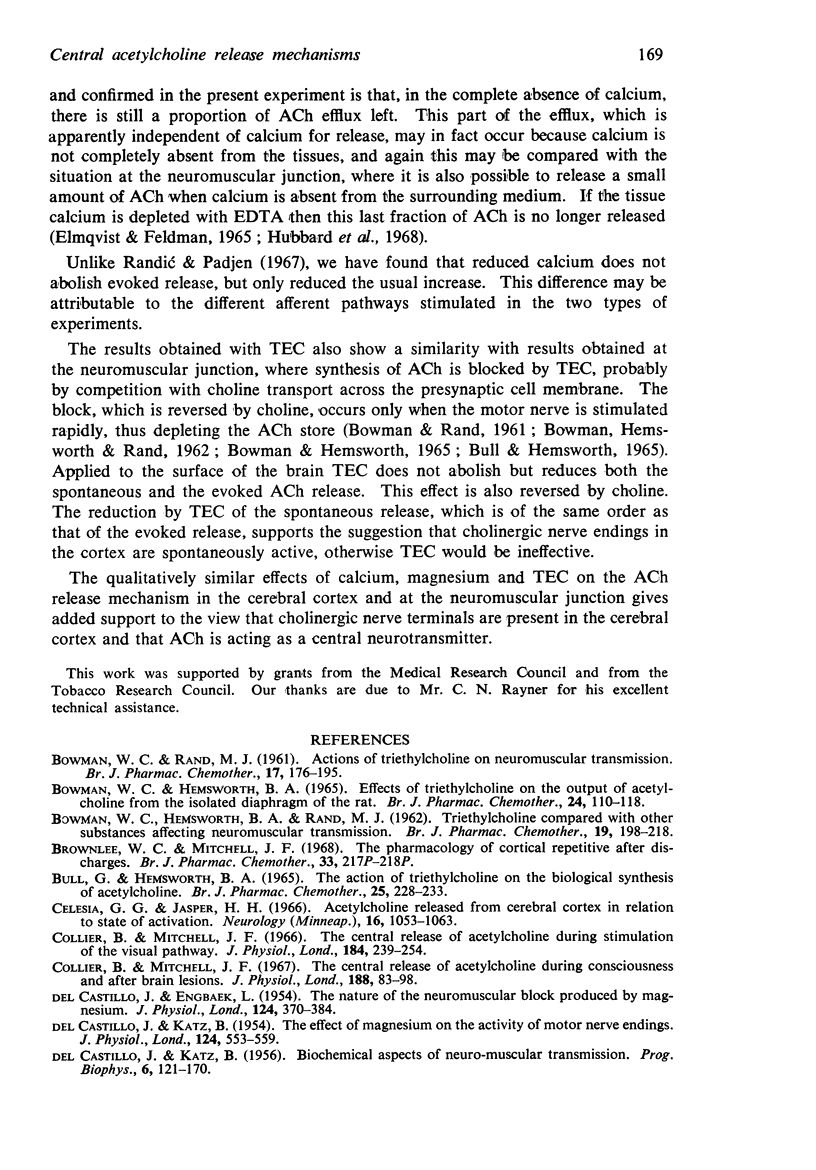
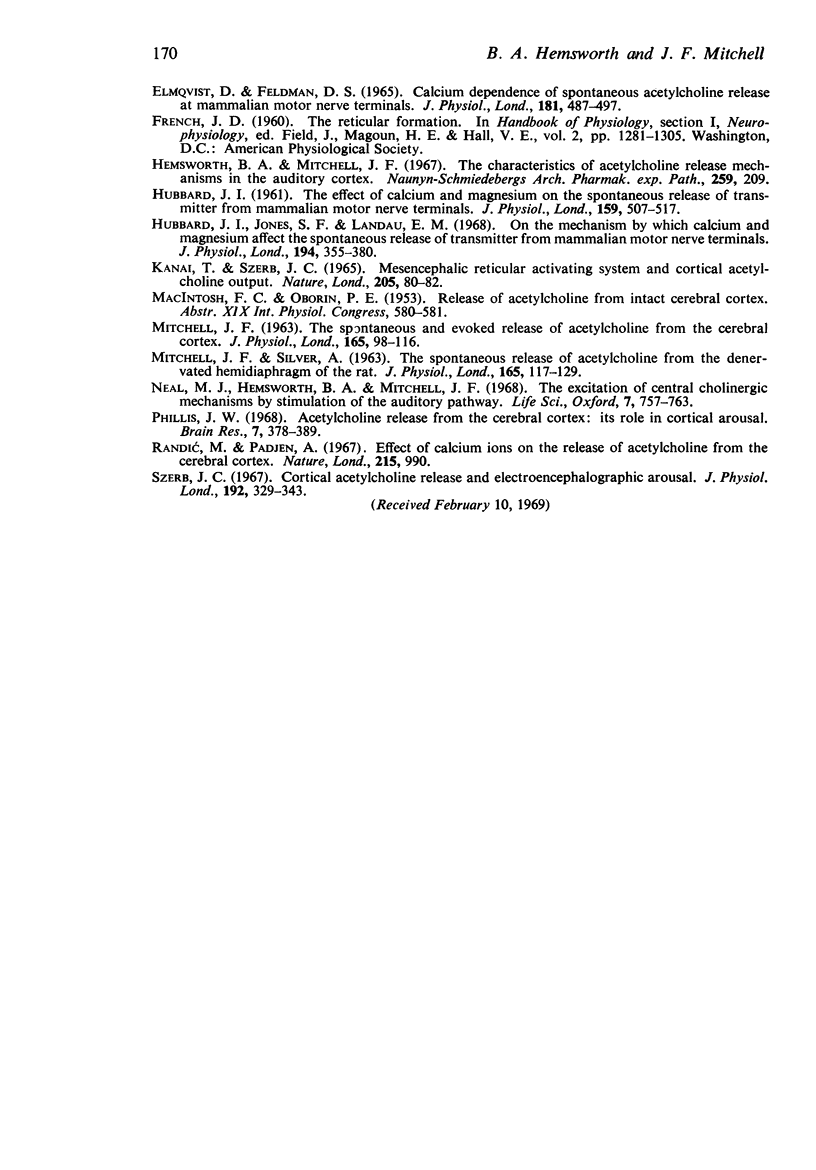
Selected References
These references are in PubMed. This may not be the complete list of references from this article.
- BOWMAN W. C., HEMSWORTH B. A. EFFECTS OF TRIETHYLCHOLINE ON THE OUTPUT OF ACETYLCHOLINE FROM THE ISOLATED DIAPHRAGM OF THE RAT. Br J Pharmacol Chemother. 1965 Feb;24:110–118. doi: 10.1111/j.1476-5381.1965.tb02084.x. [DOI] [PMC free article] [PubMed] [Google Scholar]
- BOWMAN W. C., HEMSWORTH B. A., RAND M. J. Triethylcholine compared with other substances affecting neuromuscular transmission. Br J Pharmacol Chemother. 1962 Aug;19:198–218. doi: 10.1111/j.1476-5381.1962.tb01440.x. [DOI] [PMC free article] [PubMed] [Google Scholar]
- BOWMAN W. C., RAND M. J. Actions of triethylcholine on neuromuscular transmission. Br J Pharmacol Chemother. 1961 Oct;17:176–195. doi: 10.1111/j.1476-5381.1961.tb01278.x. [DOI] [PMC free article] [PubMed] [Google Scholar]
- Celesia G. G., Jasper H. H. Acetylcholine released from cerebral cortex in relation to state of activation. Neurology. 1966 Nov;16(11):1053–1063. doi: 10.1212/wnl.16.11.1053. [DOI] [PubMed] [Google Scholar]
- Collier B., Mitchell J. F. The central release of acetylcholine during consciousness and after brain lesions. J Physiol. 1967 Jan;188(1):83–98. doi: 10.1113/jphysiol.1967.sp008125. [DOI] [PMC free article] [PubMed] [Google Scholar]
- Collier B., Mitchell J. F. The central release of acetylcholine during stimulation of the visual pathway. J Physiol. 1966 May;184(1):239–254. doi: 10.1113/jphysiol.1966.sp007913. [DOI] [PMC free article] [PubMed] [Google Scholar]
- DEL CASTILLO J., ENGBAEK L. The nature of the neuromuscular block produced by magnesium. J Physiol. 1954 May 28;124(2):370–384. doi: 10.1113/jphysiol.1954.sp005114. [DOI] [PMC free article] [PubMed] [Google Scholar]
- DEL CASTILLO J., KATZ B. Biophysical aspects of neuro-muscular transmission. Prog Biophys Biophys Chem. 1956;6:121–170. [PubMed] [Google Scholar]
- DEL CASTILLO J., KATZ B. The effect of magnesium on the activity of motor nerve endings. J Physiol. 1954 Jun 28;124(3):553–559. doi: 10.1113/jphysiol.1954.sp005128. [DOI] [PMC free article] [PubMed] [Google Scholar]
- Elmqvist D., Feldman D. S. Calcium dependence of spontaneous acetylcholine release at mammalian motor nerve terminals. J Physiol. 1965 Dec;181(3):487–497. doi: 10.1113/jphysiol.1965.sp007777. [DOI] [PMC free article] [PubMed] [Google Scholar]
- HUBBARD J. I. The effect of calcium and magnesium on the spontaneous release of transmitter from mammalian motor nerve endings. J Physiol. 1961 Dec;159:507–517. doi: 10.1113/jphysiol.1961.sp006824. [DOI] [PMC free article] [PubMed] [Google Scholar]
- Hubbard J. I., Jones S. F., Landau E. M. On the mechanism by which calcium and magnesium affect the spontaneous release of transmitter from mammalian motor nerve terminals. J Physiol. 1968 Feb;194(2):355–380. doi: 10.1113/jphysiol.1968.sp008413. [DOI] [PMC free article] [PubMed] [Google Scholar]
- KANAI T., SZERB J. C. MESENCEPHALIC RETICULAR ACTIVATING SYSTEM AND CORTICAL ACETYLCHOLINE OUTPUT. Nature. 1965 Jan 2;205:80–82. doi: 10.1038/205080b0. [DOI] [PubMed] [Google Scholar]
- Mitchell J. F., Silver A. The spontaneous release of acetylcholine from the denervated hemidiaphragm of the rat. J Physiol. 1963 Jan;165(1):117–129. doi: 10.1113/jphysiol.1963.sp007046. [DOI] [PMC free article] [PubMed] [Google Scholar]
- Phillis J. W. Acetylcholine release from the cerebral cortex: its role in cortical arousal. Brain Res. 1968 Mar;7(3):378–389. doi: 10.1016/0006-8993(68)90004-8. [DOI] [PubMed] [Google Scholar]
- Randic M., Padjen A. Effect of calcium ions on the release of acetylcholine from the cerebral cortex. Nature. 1967 Aug 26;215(5104):990–990. doi: 10.1038/215990a0. [DOI] [PubMed] [Google Scholar]
- Szerb J. C. Cortical acetylcholine release and electroencephalographic arousal. J Physiol. 1967 Sep;192(2):329–343. doi: 10.1113/jphysiol.1967.sp008303. [DOI] [PMC free article] [PubMed] [Google Scholar]


